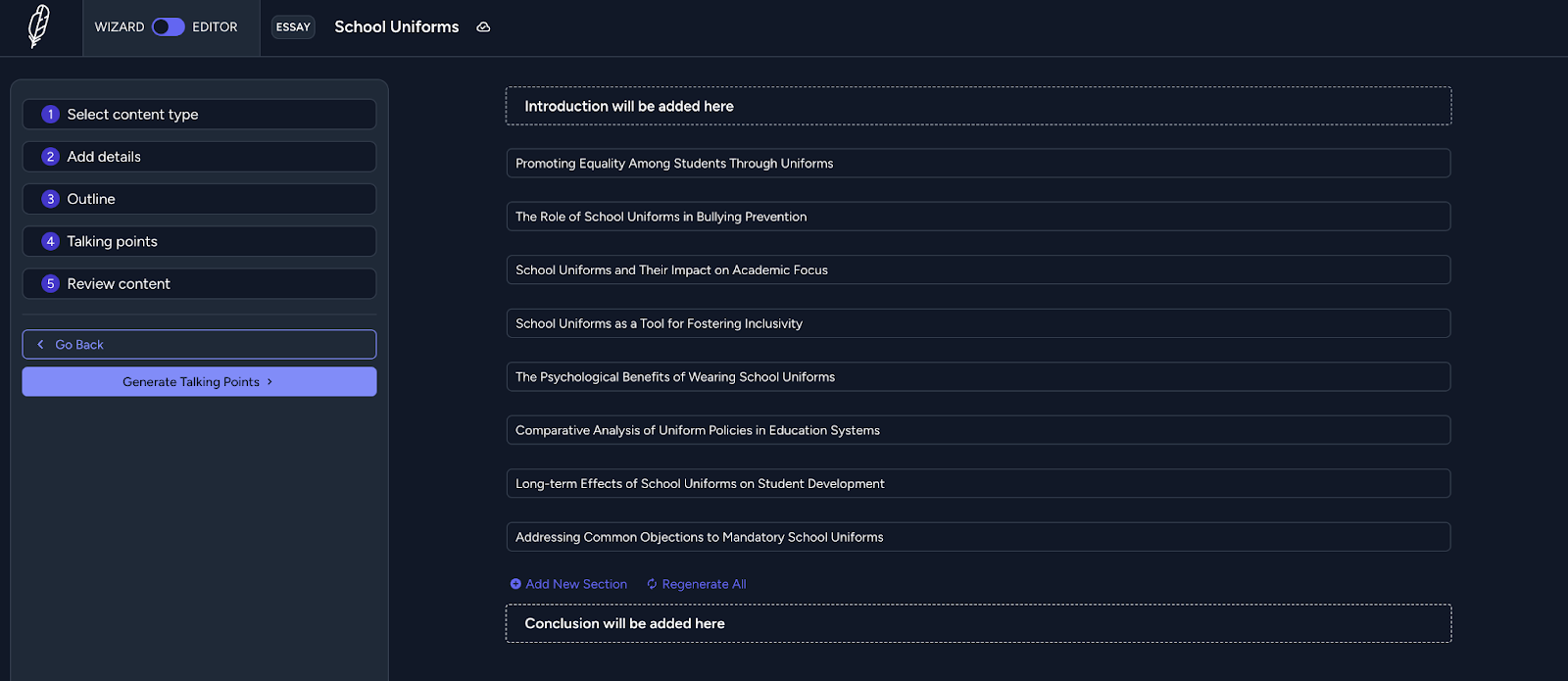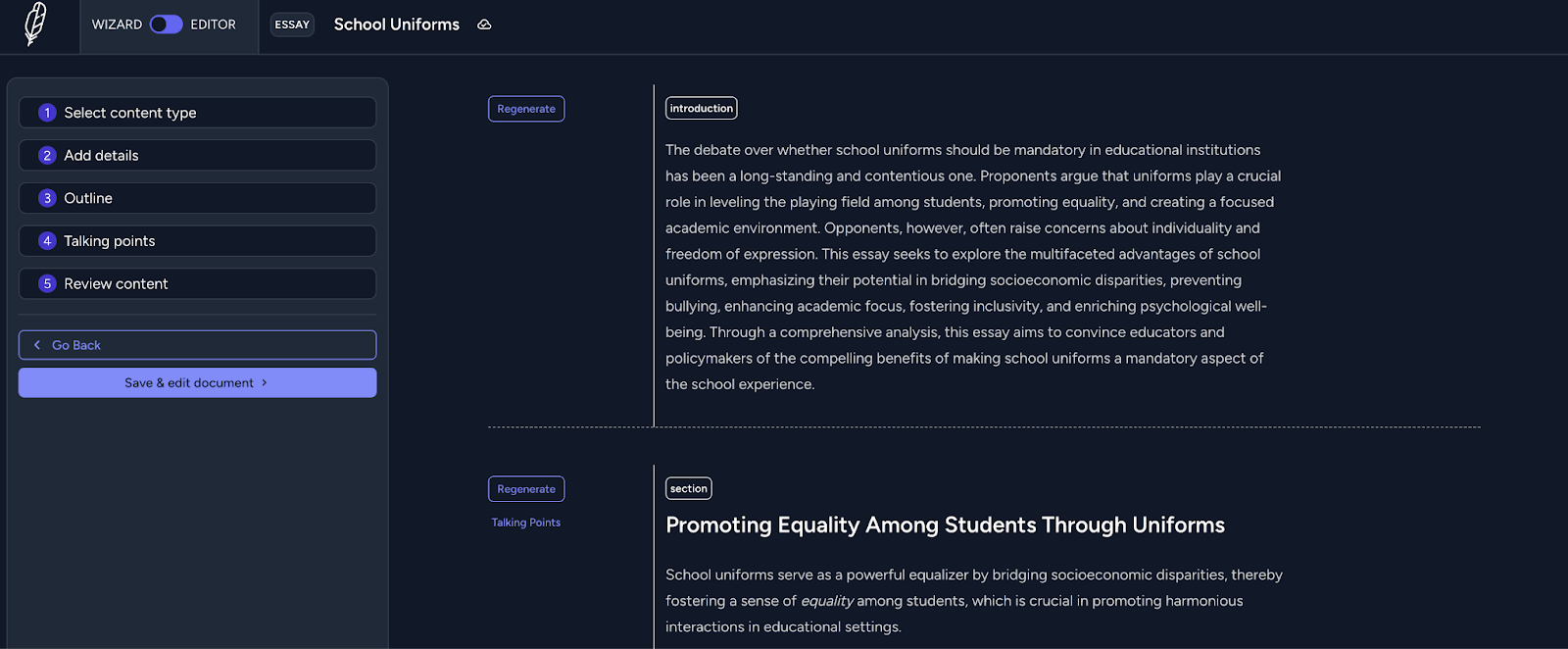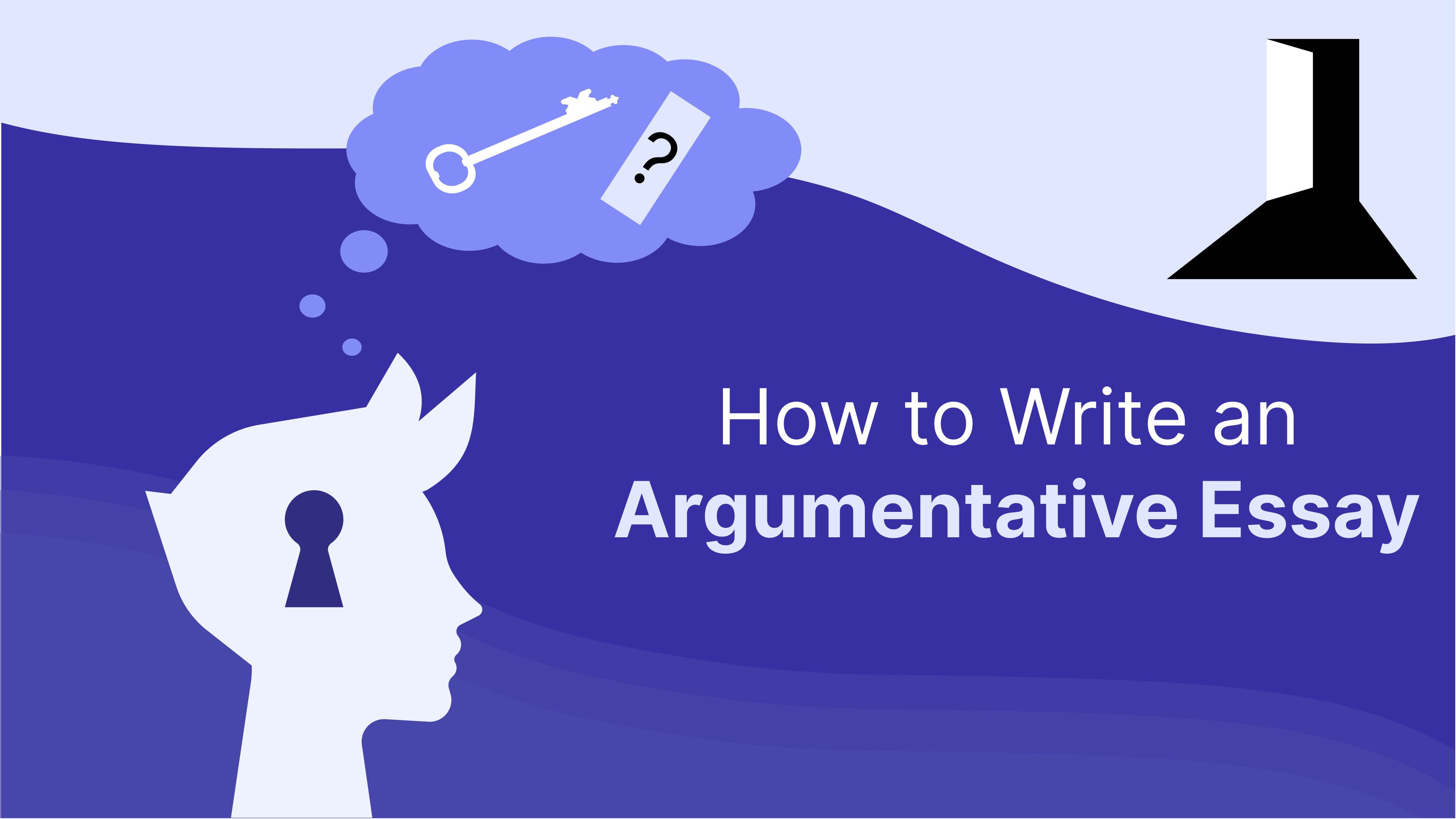High school and college students often receive assignments to write argumentative essays as part of their academic work. These essays help professors assess your ability to think critically, build logical arguments, and back them up with evidence. Writing an argumentative essay is also a great way to express your opinion and show that you can consider different perspectives on a topic.
If you’ve ever felt unsure about how to start or structure your essay, don’t worry. We’ve got all the information you need to learn the process step by step. By the end of this guide, you’ll know exactly how to write a clear, convincing, and well-organized argumentative essay.
What Is an Argumentative Essay?
An argumentative essay is a type of writing where you take a clear position on a topic and support it with facts and evidence. The goal is to convince your reader why your side of the argument is stronger. But it’s not just about sharing opinions—you need to back them up with solid proof.
Think of it like a debate in writing. You choose a topic, explain your point of view, and respond to other opinions. For example, if you’re writing about whether schools should have uniforms, you’d argue for or against uniforms. You’d use reasons like cost, individuality, or discipline to support your side.
What makes an argumentative essay different is that you also acknowledge the opposing view. Then, you explain why your argument is better. For instance, if someone says uniforms limit creativity, you could argue that they promote equality and reduce bullying.
Key Elements of an Argumentative Essay
There are four key elements you need to include in your argumentative essay: claim, evidence, counterarguments, and rebuttal.
1. Claim
Your claim is your main argument or the point you’re trying to prove. It’s the foundation of your essay. Your claim should be clear, specific, and debatable.
Example:
“School uniforms should be mandatory because they promote equality among students.”
2. Evidence
Evidence supports your claim and helps convince readers that your argument is valid. This could be facts, statistics, expert opinions, or real-life examples.
Example:
“According to a 2023 study, schools with uniform policies reported a 30% reduction in bullying incidents compared to schools without uniforms.”
3. Counterarguments
A counterargument is the opposing side of your claim. Addressing counterarguments shows that you’ve considered different perspectives. It also makes your essay more balanced and thoughtful.
Example:
“Some people argue that school uniforms limit students’ ability to express themselves.”
4. Rebuttal
A rebuttal is your response to the counterargument. Here, you explain why the opposing view isn’t as strong as your claim. A good rebuttal uses logic and evidence to refute the counterargument.
Example:
“While uniforms may limit some self-expression, students can still express their individuality through hairstyles, accessories, and personalities. Uniforms also reduce peer pressure to wear expensive or trendy clothing.”
Types of Claims in an Argumentative Essay
When writing an argumentative essay, your main argument (or claim) can take different forms, depending on what you’re trying to prove. Here are the main types of claims and examples to help you understand them:
1. Claim of Fact
A claim of fact argues if something is true or false. It’s based on evidence that can be proven or disproven.
Example:
“Schools with uniform policies have fewer bullying incidents compared to schools without them.”
2. Claim of Value
A claim of value focuses on the importance, morality, or worth of something. It often includes words like “better,” “worse,” “right,” or “wrong.”
Example:
“Wearing school uniforms is a fairer system because it reduces competition over clothing.”
3. Claim of Policy
A claim of policy suggests a course of action or a solution to a problem. It often starts with words like “should” or “must.”
Example:
“Schools should make uniforms mandatory to create a more equal learning environment.”
4. Claim of Cause and Effect
This type of claim argues that one thing leads to another. It connects actions to their outcomes.
Example:
“Requiring school uniforms leads to improved focus in the classroom by reducing distractions.”
5. Claim of Definition
A claim of definition explains what something means or how it should be classified. It often argues over interpretations.
Example:
“School uniforms are not just clothing—they represent discipline and unity among students.”
Approaches to Argumentative Essays
There are different ways to approach an argumentative essay. The approach you choose depends on how you want to present your argument and convince your reader. Here are the main approaches with examples to help you understand.
1. Classical Approach (Aristotelian Approach)
The Classical or Aristotelian Approach is the most straightforward approach. To apply this method, you introduce your argument, present evidence, address counterarguments, and conclude with a strong statement. It’s a great method to use if you’re confident your argument is stronger than the opposing one.
Example:
Topic: Should schools require uniforms?
Introduction: “School uniforms help create a better learning environment.”
Main Argument: “Uniforms reduce bullying and distractions caused by clothing choices.”
Counterargument: “Some argue uniforms limit creativity.”
Rebuttal: “However, students can still express themselves through hairstyles, accessories, and personalities.”
Conclusion: “Uniforms are key to promoting equality and focus in schools.”
2. Rogerian Approach
The Rogerian Approach focuses on finding common ground with the opposing side. You should use it when dealing with a sensitive or controversial topic. It will help you show empathy and try to reach a compromise.
Example:
Topic: Should schools require uniforms?
Acknowledge the other side: “Some people think that uniforms limit individuality, which is an important part of self-expression.”
Show understanding: “It’s true that self-expression is important, especially for teenagers.”
Present your argument: “However, uniforms create a sense of equality, which can reduce bullying and improve focus.”
Find middle ground: “So, schools could allow uniforms but let students customize them with badges or small personal touches.”
3. Toulmin Approach
This method is more structured and focuses on breaking down your argument into smaller parts: claim, evidence, and reasoning. It’s great for complex topics.
Example:
Topic: Should schools require uniforms?
Claim: “School uniforms improve focus in the classroom.”
Evidence: “Studies show that students in uniformed schools are 20% more likely to stay focused during lessons.”
Reasoning: “By reducing distractions caused by clothing choices, students can concentrate more on learning.”
Counterargument: “Some argue that uniforms are too expensive.”
Rebuttal: “However, uniforms are a one-time purchase and are often more affordable than trendy clothes.”
Which Approach Should You Use?
Use the Classical Approach if you want to argue your point directly and strongly. This approach is the best when you’re confident your argument is more persuasive than the opposing view.
Try the Rogerian Approach if your topic is sensitive or controversial and requires understanding and compromise. We recommend you use this approach for topics where people have strong emotional investments, like debates about technology use or social issues.
Go for the Toulmin Approach if your argument needs a detailed breakdown of evidence and reasoning. You should use this method for complex or highly technical topics where you need to carefully connect your evidence to your claim.
Argumentative Essay Outline and Structure
An argumentative essay needs a clear structure to make your ideas easy to follow. If your essay is well-organized, it’s easier for readers to understand and agree with your argument.
How to Write an Argumentative Essay Introduction
First, you need to write an introduction that grabs the reader’s attention and tells them what to expect. The introduction includes the following points:
Hook: You should start your introduction with a hook - something interesting to catch the reader’s attention. For example, “Did you know that 1 in 5 students skips lunch because they can’t afford it?”
Background Information: In this section, you should briefly explain the topic and why it matters. For example, “School lunch programs are important because they support student health and academic performance.”
Thesis Statement: You should clearly state your main argument. For example, “Schools should provide free lunches to all students to promote fairness, health, and better learning outcomes.”
How to Develop Your Argument in the Body Section
Start with a Topic Sentence: The topic sentence is the first sentence of your paragraph and introduces the main idea you’ll discuss. It helps the reader understand what the paragraph will focus on and keeps your writing organized. Example: “School uniforms can reduce bullying by making all students look equal.”
Use Evidence to Support Your Point: Next, you should include facts, data, or examples to back up the main idea. We recommend to use reliable sources, like studies, statistics, or expert opinions as evidence. Example: “A study by XYZ University found that schools with uniforms reported 30% fewer bullying incidents compared to schools without uniforms.”
Explain Your Evidence: Presenting evidence isn’t enough, you should show how the evidence connects to your argument and why it supports your claim. This step makes your ideas more persuasive. Example: “When all students wear the same clothes, there’s less pressure to keep up with expensive trends. This reduces teasing and creates a fairer environment for everyone.”
Address Counterarguments: If you want to write a strong essay, you shouldn’t ignore the other side of the argument. You should Include counterarguments in your essay to show that you’ve thought about different perspectives. This also builds trust with your reader because it shows you’re not biased. Example: “Some people argue that uniforms limit creativity and self-expression.”
Refute the Counterargument: When you mention an opposing view, you should explain why it’s not as strong as your argument. It will be best if you use evidence and logic to respond to the counterargument. Example: “However, students can still express their individuality through hairstyles, accessories, and their behavior. Uniforms don’t take away their personality, but they do reduce competition over clothing.”
End with a Transition Sentence: A transition sentence connects your paragraph to the next one, making your essay flow smoothly. It reminds the reader of what you’ve discussed and sets up the next point. Example: “While uniforms reduce bullying, they also help students focus better in class.”
How to Write a Conclusion for an Argumentative Essay
To write a strong conclusion for your argumentative essay, you should restate your thesis in a fresh way to remind the reader of your main argument. Then, you should briefly summarize the key points you discussed in the body and highlight the most important arguments without going into too much detail.
After that, in the conclusion of your argumentative essay you should explain why your argument matters and connect it to the bigger picture and show the reader how your ideas are relevant and impactful.
Finally, at the end of the conclusion write a strong closing statement that leaves a lasting impression.
Example:
“Every student deserves to learn in a safe and equal environment, and school uniforms are a simple step toward achieving that goal.”
How to Write an Argumentative Essay Using GetCopy AI
Using GetCopy AI, an AI-powered essay writing and researching tool, you can accelerate the process of writing your argumentative essay. This tool is especially helpful if you have a huge workload or tight deadlines and don’t have the time needed for manual research and writing.
GetCopy AI will create high-quality content based on your topic and help you create an argumentatvove essay that is well-structured, informative, and persuasive. With GetCopyAI, you’ll save time and produce content that will definitely impress your professors.
Step 1: Enter the Details of Your Argumentative Essay in GetCopy AI
GetCopyAI offers several document types, including essays, literature reviews, research papers, personal statements, and more.
To write your argumentative essay, start by selecting the Essay option in the Content Type section.
Next, in the Document Details section you’ll need to enter your the title of your document.
In the Content Specifications section, write the topic of your essay and include any useful keywords you want the tool to focus on. These keywords are very important because the tool uses them to generate the headings and structure the essay around them. For example, if your essay is about school uniforms, you could include keywords like “bullying prevention,” “equality in schools,” and “academic focus.”
Also, make sure to specify your audience. If the tool knows who the essay is intended for, such as high school or college students it will adjust the content to match the readers’ needs.
In the Tone of Voice section, you can choose how you want the content to sound. The tool includes options like academic, exciting, friendly, humorous, convincing, empathetic, and more. For argumentative essays, we recommend selecting the convincing tone to make your arguments persuasive.

Step 2: Create an Essay Outline
Based on the details you provide to GetCopyAI, the tool will automatically generate an outline with the main headings for your essay. For example, for the essay titled “Should School Uniforms Be Mandatory?”, it generated the following headings:
Promoting Equality Among Students Through Uniforms
The Role of School Uniforms in Bullying Prevention
School Uniforms and Their Impact on Academic Focus
School Uniforms as a Tool for Fostering Inclusivity
As you can see, all these headings are relevant and cover key points in the argumentative essay.
However, if you are not satisfied with these headings, GetCopyAI gives you full control to customize the outline. You can regenerate the entire outline to get new suggestions, manually add a section that you feel is missing. You can also edit the existing headings, or even remove points that don’t align with your vision for the essay.

Step 3: Generate Talking Points
When you are satisfied with your outline, you can move forward and generate talking points for your argumentative essay. Talking points are more detailed descriptions of what should be covered in each heading.
In our example under the heading “Promoting Equality Among Students Through Uniforms”, the tool generated the following talking points:
“School uniforms serve as a powerful equalizer by bridging socioeconomic disparities, thereby fostering a sense of equality among students, which is crucial in promoting harmonious interactions in educational settings.”
“Reducing clothing-related distractions allows students to focus more on academics and personal growth.”
If you’re not satisfied with the generated talking points, you can regenerate them for better suggestions. You can also manually add additional talking points to any section, edit existing ones to make them more precise, or remove the points you don’t like. This level of control ensures that your essay is tailored to your needs and ideas.

Step 4: Review and Finalize Your Informative Essay

Based on the headings and talking points you confirm, the tool will automatically generate the content of your argumentative essay, including an introduction and conclusion.
If you’re not satisfied with a specific section, you have the option to regenerate the content for that section. Alternatively, you can go back to the Talking Points step and make edits to refine them further. After you update the talking points, the tool will generate more precise and accurate content that matches your vision for the essay.

Next, you can save your argumentative essay in the Wizard Editor and proceed with a manual review. By “manual review,” we mean you can edit the headings, adjust the formatting, or remove sections, just like you would in a Microsoft Word document or Google Docs.
If you need to elaborate more on a specific point, you can use the tool to make a paragraph longer. If you want to condense a section, simply use the “Make Shorter” command to streamline it. If you feel a particular section needs rephrasing, the tool gives you the option to rephrase it or even change the tone to suit your preferences.
FAQ
What is the format of an argumentative essay?
An argumentative essay has three parts: introduction, body, and conclusion. The body includes your arguments, evidence, and counterarguments.
How long should an argumentative essay be?
It depends on the assignment, but most are 500–1,500 words. Check your teacher’s requirements.
How to write a thesis statement for your argumentative essay?
Your thesis should clearly state your main argument. Keep it concise and make sure it reflects your stance. For example: “School uniforms promote equality and reduce bullying.”

